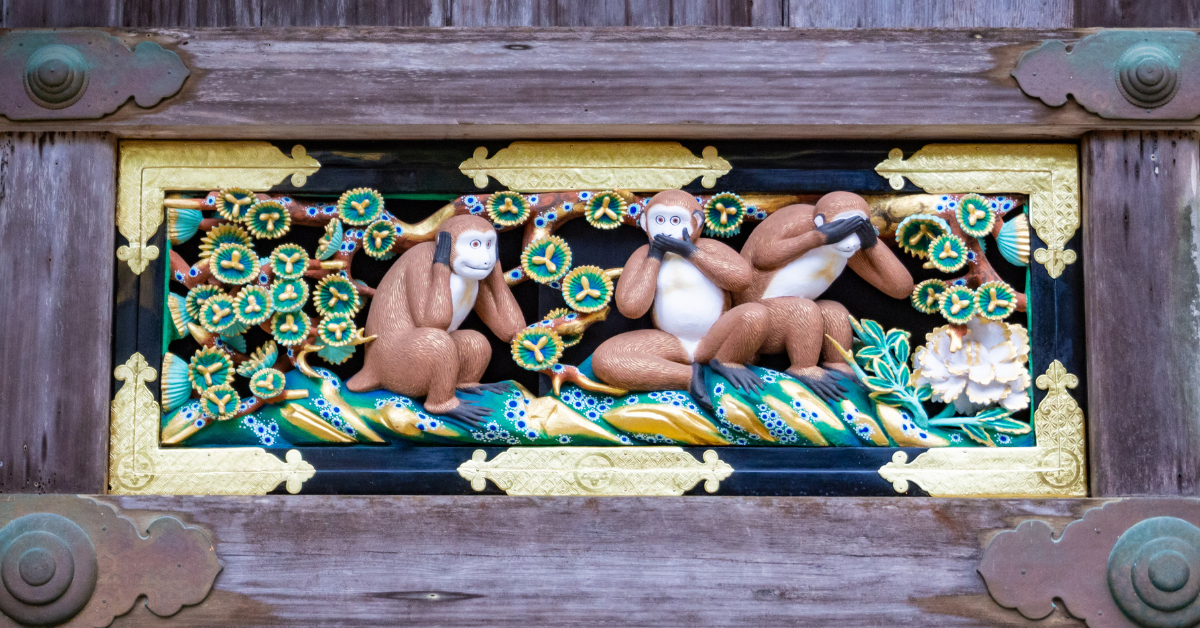Nikko Toshogu Shrine, located in Tochigi Prefecture, is the grand shrine dedicated to Tokugawa Ieyasu, the first shogun of the Edo period. Known for its lavish decorations and intricate carvings, it is also designated as a UNESCO World Heritage site.
Origins of Nikko Toshogu
Nikko Toshogu was founded in 1617, following the death of Tokugawa Ieyasu. The initial shrine buildings were constructed by the second shogun, Tokugawa Hidetada. Later, during the reign of the third shogun, Tokugawa Iemitsu, a grand renovation transformed the shrine into its present opulent form. The construction was not only a sacred dedication but also a political statement to demonstrate the Tokugawa clan’s authority throughout Japan.
| Item | Details |
|---|---|
| Location | Nikko City, Tochigi Prefecture |
| Founded | 1617 |
| Enshrined Deity | Tokugawa Ieyasu |
| Major Renovation | 1636 (by Tokugawa Iemitsu) |
| World Heritage Registration | 1999 “Shrines and Temples of Nikko” |
Architectural Style and Artistic Value
The architectural style of Toshogu is known as Gongen-zukuri. This layout connects the worship hall and the main sanctuary with an intermediate room, creating a solemn and sacred atmosphere.
Another striking feature is the vivid polychrome decorations and countless carvings. Across 55 buildings within the precincts, motifs of Chinese legends, mythical creatures, and plants are carved, representing a fusion of Japanese traditional aesthetics and foreign cultural influences. This showcases the extraordinary skills of craftsmen of the Edo period.
| Architectural Element | Feature |
|---|---|
| Gongen-zukuri | Worship hall and main sanctuary connected by an intermediate space |
| Polychrome design | Rich use of red, blue, green, and gold |
| Carvings | Plants, animals, saints, and mythical beings |
| Materials | Durable wood such as zelkova |
The Magnificence of Yomeimon Gate
The Yomeimon Gate, designated as a National Treasure, is the symbolic structure of Toshogu. Over 500 carvings adorn the gate, depicting saints, animals, and legendary beings. Its beauty is so overwhelming that it has been nicknamed the “Gate of Sunlight” or the “Gate that can be admired until sundown,” as one could gaze at it endlessly.
For tourists, this is one of the most photogenic and iconic spots, embodying Japanese aesthetics and masterful craftsmanship.
The Symbolism of the Three Wise Monkeys and the Sleeping Cat
Two of Toshogu’s most famous carvings are the Three Wise Monkeys—“See no evil, speak no evil, hear no evil”—and the Sleeping Cat.
The Three Monkeys are carved on the stable walls, narrating the stages of human life. They symbolize moral teachings, encouraging the avoidance of evil influences and promoting healthy growth.
The Sleeping Cat, located at the entrance to the inner shrine, is accompanied on its reverse by sparrows. The image of a predator peacefully sleeping while sparrows play freely expresses a world of harmony and peaceful coexistence.
| Carving | Meaning |
|---|---|
| Three Monkeys | A moral lesson to avoid evil and grow righteously |
| Sleeping Cat | Symbol of peace and harmony |
| Sparrows | Representation of fearless coexistence |
| Sacred Stable | Building for the sacred horse |
Value as a World Heritage Site
In 1999, Toshogu was registered as a UNESCO World Cultural Heritage site as part of the “Shrines and Temples of Nikko.” The site represents not only architectural brilliance but also the fusion of Japan’s political history and religious culture.
Furthermore, the shrine’s harmony with the surrounding natural environment has been highly valued. The combination of elaborate architecture and Nikko’s cedar-lined mountains creates a setting that leaves a deep impression on visitors.
| Evaluation Aspect | Details |
|---|---|
| Historical Value | Symbol of the Tokugawa shogunate’s authority |
| Artistic Value | Lavish architecture and carvings |
| Harmony with Nature | Integration with Nikko’s mountain worship traditions |
| Global Significance | Iconic representation of Japanese culture |
Annual Festivals and Rituals
Throughout the year, many ceremonies are held at Toshogu. The most celebrated are the Spring and Autumn Grand Festivals, which attract large crowds. The highlight is the “Hyakumono-Zoroi Sennin Musha Gyoretsu,” a grand parade featuring warriors in armor, reenacting the grandeur of the Edo period.
| Festival | Season | Features |
|---|---|---|
| Spring Grand Festival | May | Warrior parade, horseback archery |
| Autumn Grand Festival | October | Hyakumono-Zoroi Sennin Musha Gyoretsu |
| Setsubun Ceremony | February | Bean-throwing and purification rites |
| New Year’s Eve Festival | December | Rituals to welcome the new year |
Toshogu and Natural Scenery
Toshogu is located within Nikko National Park, surrounded by lush nature. Each season offers a different spectacle—cherry blossoms in spring, deep greenery in summer, fiery foliage in autumn, and snowy landscapes in winter.
Visitors often combine their shrine visit with excursions to Lake Chuzenji and Kegon Falls, enjoying both cultural and natural wonders. This unique blend is a defining feature of Nikko as a travel destination.
Why It’s Popular with Foreign Travelers
For international visitors, Toshogu offers an unparalleled opportunity to experience Japanese history, religion, art, and nature in one place. The elaborate decorations and vivid colors differ from Western sacred architecture, offering an intriguing cultural comparison.
Another advantage is accessibility: from Tokyo, Nikko can be reached in about two hours by train. Even short-term travelers can enjoy a day trip, making Toshogu a convenient yet deeply enriching destination.
Conclusion
Nikko Toshogu Shrine is a grand mausoleum for Tokugawa Ieyasu, encapsulating Japanese history, artistry, and spirituality. Highlights such as the Yomeimon Gate, the Three Wise Monkeys, and the Sleeping Cat captivate all visitors, regardless of cultural background.
The harmonious blend of architecture and nature, combined with its recognition as a World Heritage site, makes Toshogu a place where the pinnacle of Japanese culture can be experienced firsthand. For international travelers, it serves not only as a sightseeing spot but also as a gateway to understanding Japan itself.






